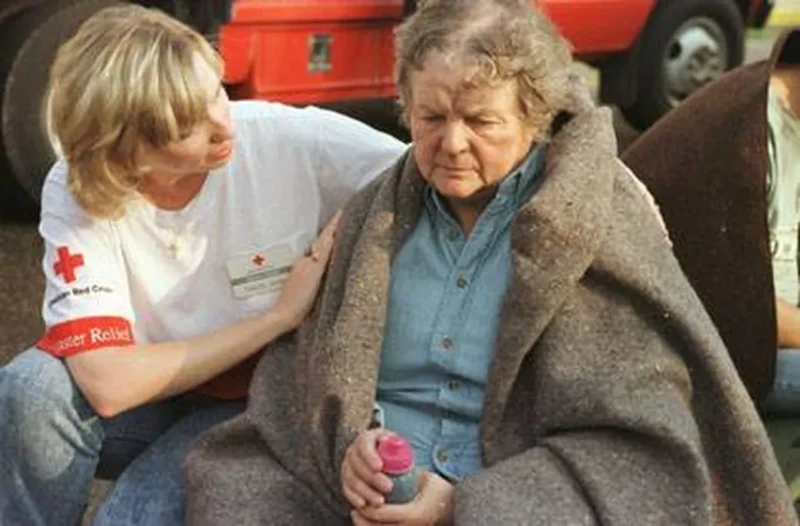In times of emergency and disaster, blankets are often overlooked as an essential part of relief efforts. But these simple objects can make a tremendous difference in helping those affected by natural disasters or other catastrophic events.
This article will explore how blankets provide comfort and security to people in need, the different types of blankets available for use in emergencies, and the organizations that rely on them to save lives. Discover why blankets play such an important role in assisting during difficult times – The Unsung Heroes: Blankets in Emergency and Disaster Relief.
The Varied Benefits of Using Blankets for Emergency and Disaster Relief
Blankets are an integral part of emergency and disaster relief. Not only do they provide warmth in cold climates, but they can also be used to protect people from the elements during natural disasters or other emergencies.
Blankets come in a variety of materials, sizes, and colors, making them adaptable to any situation. One of the most beneficial aspects of using blankets as part of emergency and disaster relief is their flexibility when it comes to deployment.
They can easily be transported to any location quickly and efficiently due to their lightweight and compact size; this makes them ideal for providing on-the-spot assistance during times of crisis. Furthermore, blankets are often available at a reduced cost or even free from charitable organizations that accept donations; this means those suffering from unexpected catastrophes can access much-needed comfort without financial burden.
Additionally, blankets also offer protection against disease vectors like mosquitoes which can spread dangerous illnesses such as malaria or dengue fever in some areas affected by disasters or crises. By covering exposed parts of the body with a blanket these diseases can be prevented more effectively than relying solely on insect repellent sprays alone.
In conclusion, blankets should not be overlooked when considering how best to respond during emergencies and disasters; not only are they easy to deploy and relatively inexpensive but they have many positive uses including providing warmth, protecting against disease vectors, and offering emotional comfort in difficult times.
Challenges Faced When Providing Blankets During Emergencies and Disasters

The provision of blankets during times of emergency and disaster can be a difficult task. Without an adequate supply chain or infrastructure in place, many barriers must be overcome to ensure that those affected by the crisis can access the necessary supplies.
For example, transportation challenges such as limited resources and roads may prevent help from reaching vulnerable populations quickly enough. Furthermore, weather conditions like extreme cold or heat can also make it difficult for relief workers to provide blankets safely and efficiently.
In addition, cultural differences between regions can play a role in determining how best to deliver materials like blankets so that they are accepted without resistance. Lastly, financial constraints on aid organizations present another challenge since providing support requires significant resources which may not always be available in sufficient amounts when needed most urgently.
Ways to Maximize the Effectiveness of Providing Blankets for Humanitarian Assistance
Blankets are an essential component of any emergency or disaster relief effort. To maximize the effectiveness of providing blankets for humanitarian assistance, a few key considerations should be taken into account.
First and foremost, it is important to ensure that the blankets provided are appropriate for the situation and environment in which they will be used. Blankets designed for cold climates may not provide adequate protection in more tropical settings while heavier blankets may cause discomfort in hotter environments. Additionally, considering factors such as durability and flame retardancy can help ensure that the blankets last longer when exposed to adverse conditions.
Another factor to consider is how these resources are allocated and distributed among those who need them most urgently. When distributing supplies like blankets, priority should always be given to vulnerable populations such as children, elderly persons, disabled people, or pregnant women first so their needs can be met quickly before other groups’ needs become pressing issues.
Finally, governments should seek out ways of incorporating local knowledge into their planning processes whenever possible so they can better understand what types of materials might work best in different contexts or regions and have access to local labor if necessary during distribution efforts. This kind of collaboration often leads to increased efficiency with fewer resources wasted due to a lack of preparation or understanding on behalf of government institutions alone.
Conclusion
:max_bytes(150000):strip_icc()/GettyImages-1318462852-ce5859605f124260b949f7727fcc423c.jpg)
Blankets have long been an unsung hero in emergency and disaster relief, providing warmth and comfort to those affected by the tragedy. From small-scale fires to large-scale disasters, blankets are a key component in helping people who are displaced from their homes or without access to necessities.
Blanket factory around the world have worked hard over the years to manufacture blankets for these efforts, often under difficult conditions. Thanks to them, countless lives have been made just a bit easier during times of crisis.
Without these humble heroes, we would all be worse off when disaster strikes; they deserve our thanks and recognition.


